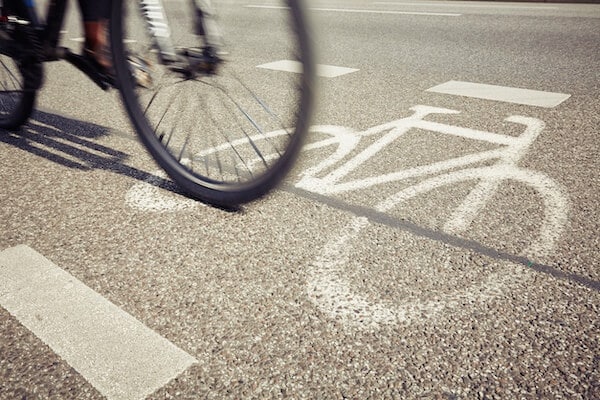It’s a new year, which means several new laws passed in 2019 are now in effect. California’s legislators recently passed a number of laws aimed at better outlining the rules of the road, defining how law enforcement officers can act in certain situations, and preventing distracted driving. Here's what you need to know about these new laws and how they impact you.
Bicycles and intersections

One of the new 2020 California laws in effect allows bicycles to go straight at an intersection from the left- or right-hand turn lane, provided that they have right-of-way.
Under new legislation (AB 1266), bicyclists in either the left- or right-hand turn lanes can elect to ride straight through the intersection so long as they have a green light indicating that they can do so. With this new rule in effect, the California Department of Transportation will work to develop standards and further guidance for how cyclists can safely share the road with other vehicles.
Cannabis and vehicle passengers
With AB 1820, there is now a divergence in the law’s treatment of cannabis and alcohol for passengers of certain vehicles. Passengers of buses, limousines, pedicabs, and campers may no longer use marijuana freely. The consumption of alcohol is still legally allowed by passengers traveling in such vehicles. This law also allows motor carriers of property to keep operating for up to 30 days past the expiration of their permit.
Use of deadly force by law enforcement officers
Law enforcement officers throughout California are now permitted (AB 392) to use deadly force only in situations where the officer “reasonably believes” that they need to do so. A qualifying scenario is one in which the officer feels that they or another person face the immediate threat of a fatal or serious injury. Corresponding legislation (SB 230) requires all of the state’s law enforcement agencies to rework their policies and provide mandatory training in line with the new law.
Wildlife salvage
Under this new legislation (SB 395), the California Department of Fish and Wildlife (CDFW) is launching a pilot program that will provide permits for the legal removal of roadkill carcasses. Working with California Highway Patrol, CDFW will allow permit holders to recover certain types of wildlife killed in auto collisions—including deer, elk, pronghorn antelope, and feral pigs—so that the wildlife can be used for wild game meat. This pilot program is in its early stages as CDFW and its partners collect data. Until this process is complete and the first permits begin being issued, consuming roadkill remains illegal.
Distracted driving
State law already prohibits drivers from using cellphones while on the road. In 2020, the penalty for breaking the law remains the same: a fine levied against the violator. However, on July 1, 2021, a new law (AB 47) will increase the penalty for cellphone distracted driving by adding a point violator’s licenses. This will remain on the driver’s record for 36 months, and is equivalent to being the at-fault party in a vehicle accident, speeding, or running a red light. Here is a guide to how driver’s license points work in our state.
For California drivers, the message from law enforcement and state officials is consistent and clear: distracted driving has no place on our state’s roads and highways, and represents just as serious of a risk to yourself and others as other dangerous driving behaviors and negligence. If you or a loved one has been injured in an auto accident here in Los Angeles, contact the experienced attorneys at Blair & Ramirez LLP for a free consultation with our team.

